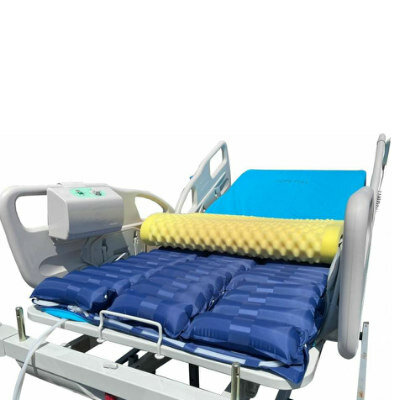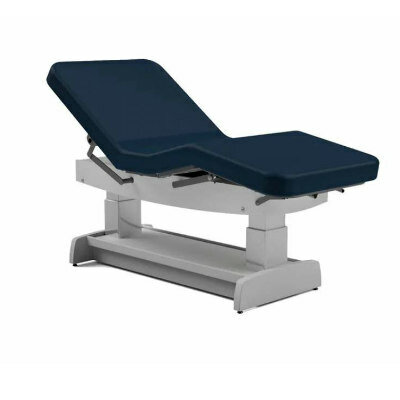Heart Valve That Grows Along With Child Could Reduce Invasive Surgeries 
|
By HospiMedica International staff writers Posted on 07 Feb 2023 |

In children with congenital pulmonary valve disease, the flow of blood between the heart and lungs is impeded. In cases where the pulmonary valves have narrowed or are leaking and cannot be treated effectively with a catheter, surgeons generally replace them with a prosthetic valve. However, the current prosthetic pulmonary valves are adult-sized and have a fixed diameter, as a result of which they must be replaced as the child grows up. Now, for the first time, a prosthetic pulmonary valve replacement specifically designed for pediatric patients can expand over time inside a child’s anatomy. The valve can be fitted to the child’s individual body size and also adjusted for size if required through a minimally-invasive transcatheter balloon dilation procedure to maintain blood flow. This could eliminate the need to perform invasive replacement surgeries every few years as the child will not require another replacement procedure until reaching adulthood.
The revolutionary device, known as the Autus Valve, was invented at Boston Children’s Hospital (Boston, MA, USA) and was first implanted in a young patient in late 2021 as part of a collaborative clinical study. In commercially available prosthetic heart valves, there are three leaflets that operate as flaps for controlling blood flow, thereby imitating the tri-leaflet structure of the human aortic valve. For developing the heart valve, the researchers drew inspiration from a device that mimicked the bi-leaflet function of a venous valve in leg veins, as its two elastic flaps possess the perfect geometry for maintaining proper closure and one-way blood flow even after the veins in the leg expand in diameter. The team believed that this process could also work in the heart and went on to study the geometric profile of the human venous valve while using this as the basis for creating a valve prototype.
The researchers conducted studies in which they implanted prototypes of the replacement pulmonary valve in growing lambs and found that the device can be fitted and then expanded in sync along with the growth of heart anatomy. They also found that the valve could successfully maintain the control of blood flow without stretching and compromising the device’s frame or material. The two leaflets in the device are made of a polymer which has a long track record of use as a pediatric pulmonary valve leaflet. Before being implanted, doctors can adjust the valve diameter to match a patient’s heart anatomy. After the device is implanted, cardiac catheterization specialists can expand the valve if it becomes too small after a child’s grows quickly by using a catheter balloon. Using an echocardiogram, doctors can assess the valve’s integrity and how well it is controlling the flow of blood. Boston Children’s is now conducting US FDA-approved early clinical studies to examine the valve’s effectiveness in children aged between 2 to 11 years. The initial study will be followed by a larger clinical trial, with the aim of seeking FDA approval for making the device commercially available.
“It’s exciting and incredibly motivating that we’re at the stage where we can actually see the device helping patients,” said the device’s inventor, Sophie-Charlotte Hofferberth, MD. “If a valve expansion is needed after the device is implanted, we anticipate a child would recover from the procedure within a few hours,”
“There is a huge need for better solutions for children with valve disease,” Hofferberth added. “A pulmonary valve that can be adjusted for size could give young patients a bridge through childhood and have a huge impact on their long-term quality of life.”
Related Links:
Boston Children’s Hospital
Latest Critical Care News
- Deep-Learning Model Predicts Arrhythmia 30 Minutes before Onset
- Breakthrough Technology Combines Detection and Treatment of Nerve-Related Disorders in Single Procedure
- Plasma Irradiation Promotes Faster Bone Healing
- New Device Treats Acute Kidney Injury from Sepsis
- Study Confirms Safety of DCB-Only Strategy for Treating De Novo Left Main Coronary Artery Disease
- Revascularization Improves Quality of Life for Patients with Chronic Limb Threatening Ischemia
- AI-Driven Prediction Models Accurately Predict Critical Care Patient Deterioration
- Preventive PCI for High-Risk Coronary Plaques Reduces Cardiac Events
- AI Diagnostic Tool Guides Rapid Diagnosis and Prediction of Sepsis
- World's First AI-Powered Sepsis Alert System Detects Sepsis in One Minute
- Smartphone Magnetometer Uses Magnetized Hydrogel to Measure Biomarkers for Disease Diagnosis
- New Technology to Revolutionize Valvular Heart Disease Care
- Super Permeable Wearable Electronics Enable Long-Term Biosignal Monitoring
- New Hydrogel Features Enhanced Capabilities for Treating Aneurysms and Halting Progression
- New AI Tool Predicts Medical Events to Support Clinical Decision-Making in Healthcare Settings
- Bioelectronic Mesh Grows With Cardiac Tissues for Comprehensive Heart Monitoring
Channels
Artificial Intelligence
view channel
AI-Powered Algorithm to Revolutionize Detection of Atrial Fibrillation
Atrial fibrillation (AFib), a condition characterized by an irregular and often rapid heart rate, is linked to increased risks of stroke and heart failure. This is because the irregular heartbeat in AFib... Read more
AI Diagnostic Tool Accurately Detects Valvular Disorders Often Missed by Doctors
Doctors generally use stethoscopes to listen for the characteristic lub-dub sounds made by heart valves opening and closing. They also listen for less prominent sounds that indicate problems with these valves.... Read moreSurgical Techniques
view channel
Hydrogel-Based Miniaturized Electric Generators to Power Biomedical Devices
The development of engineered devices that can harvest and convert the mechanical motion of the human body into electricity is essential for powering bioelectronic devices. This mechanoelectrical energy... Read moreWearable Technology Monitors and Analyzes Surgeons' Posture during Long Surgical Procedures
The physical strain associated with the static postures maintained by neurosurgeons during long operations can lead to fatigue and musculoskeletal problems. An objective assessment of surgical ergonomics... Read more.jpg)
Custom 3D-Printed Orthopedic Implants Transform Joint Replacement Surgery
The evolving field of 3D printing is revolutionizing orthopedics, especially for individuals requiring joint replacement surgeries where traditional implants fail to provide a solution. Although most people... Read more
Cutting-Edge Imaging Platform Detects Residual Breast Cancer Missed During Lumpectomy Surgery
Breast cancer is becoming increasingly common, with statistics indicating that 1 in 8 women will develop the disease in their lifetime. Lumpectomy remains the predominant surgical intervention for treating... Read morePatient Care
view channel
Surgical Capacity Optimization Solution Helps Hospitals Boost OR Utilization
An innovative solution has the capability to transform surgical capacity utilization by targeting the root cause of surgical block time inefficiencies. Fujitsu Limited’s (Tokyo, Japan) Surgical Capacity... Read more
Game-Changing Innovation in Surgical Instrument Sterilization Significantly Improves OR Throughput
A groundbreaking innovation enables hospitals to significantly improve instrument processing time and throughput in operating rooms (ORs) and sterile processing departments. Turbett Surgical, Inc.... Read more
Next Gen ICU Bed to Help Address Complex Critical Care Needs
As the critical care environment becomes increasingly demanding and complex due to evolving hospital needs, there is a pressing requirement for innovations that can facilitate patient recovery.... Read moreGroundbreaking AI-Powered UV-C Disinfection Technology Redefines Infection Control Landscape
Healthcare-associated infection (HCAI) is a widespread complication in healthcare management, posing a significant health risk due to its potential to increase patient morbidity and mortality, prolong... Read moreHealth IT
view channel
Machine Learning Model Improves Mortality Risk Prediction for Cardiac Surgery Patients
Machine learning algorithms have been deployed to create predictive models in various medical fields, with some demonstrating improved outcomes compared to their standard-of-care counterparts.... Read more
Strategic Collaboration to Develop and Integrate Generative AI into Healthcare
Top industry experts have underscored the immediate requirement for healthcare systems and hospitals to respond to severe cost and margin pressures. Close to half of U.S. hospitals ended 2022 in the red... Read more
AI-Enabled Operating Rooms Solution Helps Hospitals Maximize Utilization and Unlock Capacity
For healthcare organizations, optimizing operating room (OR) utilization during prime time hours is a complex challenge. Surgeons and clinics face difficulties in finding available slots for booking cases,... Read more
AI Predicts Pancreatic Cancer Three Years before Diagnosis from Patients’ Medical Records
Screening for common cancers like breast, cervix, and prostate cancer relies on relatively simple and highly effective techniques, such as mammograms, Pap smears, and blood tests. These methods have revolutionized... Read morePoint of Care
view channel
Critical Bleeding Management System to Help Hospitals Further Standardize Viscoelastic Testing
Surgical procedures are often accompanied by significant blood loss and the subsequent high likelihood of the need for allogeneic blood transfusions. These transfusions, while critical, are linked to various... Read more
Point of Care HIV Test Enables Early Infection Diagnosis for Infants
Early diagnosis and initiation of treatment are crucial for the survival of infants infected with HIV (human immunodeficiency virus). Without treatment, approximately 50% of infants who acquire HIV during... Read more
Whole Blood Rapid Test Aids Assessment of Concussion at Patient's Bedside
In the United States annually, approximately five million individuals seek emergency department care for traumatic brain injuries (TBIs), yet over half of those suspecting a concussion may never get it checked.... Read more
New Generation Glucose Hospital Meter System Ensures Accurate, Interference-Free and Safe Use
A new generation glucose hospital meter system now comes with several features that make hospital glucose testing easier and more secure while continuing to offer accuracy, freedom from interference, and... Read moreBusiness
view channel
Johnson & Johnson Acquires Cardiovascular Medical Device Company Shockwave Medical
Johnson & Johnson (New Brunswick, N.J., USA) and Shockwave Medical (Santa Clara, CA, USA) have entered into a definitive agreement under which Johnson & Johnson will acquire all of Shockwave’s... Read more














